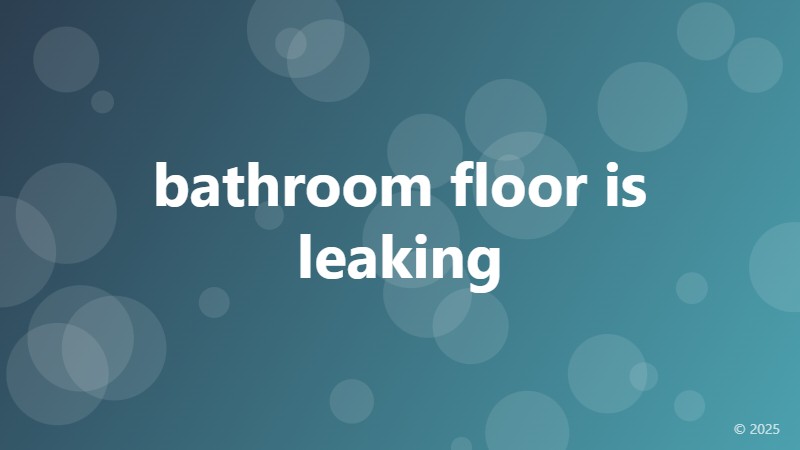bathroom floor is leaking

Identifying the Source of the Leak
If you've noticed that your bathroom floor is leaking, it's essential to identify the source of the leak as soon as possible. A leaking bathroom floor can cause significant damage to your home, including water damage, mold growth, and even structural issues. In this article, we'll explore the common causes of a leaking bathroom floor and provide you with some tips on how to fix the issue.
Common Causes of a Leaking Bathroom Floor
There are several reasons why your bathroom floor may be leaking. Here are some of the most common causes:
- Cracked or damaged tiles: Over time, bathroom tiles can crack or become damaged, allowing water to seep through the cracks and onto the floor.
- Loose or missing grout: Grout is the material used to fill in the gaps between tiles. If it's loose or missing, water can seep through and cause a leak.
- Improperly sealed shower or bathtub: If the shower or bathtub is not properly sealed, water can leak onto the floor.
- Clogged drains: A clogged drain can cause water to back up and leak onto the floor.
- High water pressure: High water pressure can cause the pipes under the bathroom floor to leak.
How to Fix a Leaking Bathroom Floor
Once you've identified the source of the leak, it's time to fix the issue. Here are some steps you can take:
- Turn off the water supply: Before you start fixing the leak, turn off the water supply to the bathroom to prevent further damage.
- Remove the flooring: Depending on the type of flooring you have, you may need to remove it to access the leak.
- Fix the leak: Once you've accessed the leak, you can fix it by replacing the cracked or damaged tile, re-grouting the area, or fixing the shower or bathtub seal.
- Replace the flooring: Once the leak is fixed, you can replace the flooring and ensure that it's properly sealed.
- Check for mold: After fixing the leak, check the area for any signs of mold or mildew and take steps to remove it.
Preventing Future Leaks
To prevent future leaks, it's essential to perform regular maintenance on your bathroom floor. Here are some tips:
- Check the grout regularly and re-grout as needed.
- Inspect the shower or bathtub seal regularly and replace it if necessary.
- Fix any cracks or damage to the tiles as soon as possible.
- Check the water pressure regularly and take steps to reduce it if necessary.
By following these tips, you can prevent future leaks and ensure that your bathroom floor remains safe and secure.